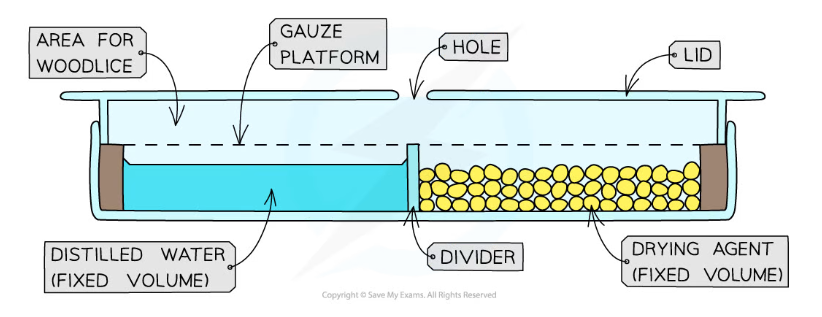- 翰林提供学术活动、国际课程、科研项目一站式留学背景提升服务!
- 400 888 0080
OCR A Level Biology:复习笔记1.2.1 Practical: Ethical Use of Organisms
Practical: Ethical Use of Organisms
The safe and ethical use of organisms to measure plant or animal responses or physiological functions
- When using live animals in biological experiments, care must be taken to avoid harming them. For example:
- Aquatic animals should only be observed for a short time before being promptly returned to their main container
- Microscopic aquatic animals (e.g. from pond water samples) should only be observed using cavity slides (slides that have a small indentation or 'well' in them that can hold a small amount of water). This ensures the organisms have enough water available to prevent dehydration or heat damage from the microscope light
- Biological investigations (especially those investigating physiological functions and adaptations) may involve humans and so it is important they are safe. For example:
- For pulse rate experiments and other studies into the effects of exercise, the type of exercise and how it will be carried out should be carefully planned in order to prevent injury
- Chemicals such as caffeine or alcohol should not be administered to human participants in a school environment
Example of the safe and ethical use of organsims
- Experiments can be carried out to investigate the effect of abiotic factors on the movement of animals
- Choice chambers and mazes are often used in these experiments and woodlice and maggots are commonly the model animals
- A scientist called J. Cloudsley-Thompson carried out the first experiments on woodlouse behaviour
- One of his experiments focused on the response of woodlouse to humidity
- He used large choice chambers that were divided into two sections
Apparatus
- Choice chambers
- Lids
- Distilled water (fixed volume in each choice chamber)
- Drying agent (fixed volume in each choice chamber)
- Gauze platforms
- Woodlice
- A dark cupboard
- A bright well-lit room
Method
- Divide each choice chamber into two sections
- Add a fixed volume of distilled water to one side and a fixed volume of drying agent to the other
- This allows for the humidity to be controlled in each section
- Insert gauze platforms into the choice chambers
- This keeps the woodlice at a safe distance from the water and drying agent
- Note that woodlice are able to move between sections
- Divide the woodlice into two even-sized groups
- Drop the woodlice from group A into choice chambers kept in the dark
- Drop the woodlice from group B into choice chambers kept in the light
- The woodlice can be dropped gently into the chamber using the hole in the lid so that they fall into the centre of the choice chamber
- Record the position of the woodlice in each choice chamber after 15 minutes
- They should fall into the following categories: moving around, stationary on the dry side, stationary in the centre or stationary on the humid side
- Repeat the experiment several times for all conditions
Results and analysis
- A significant percentage of the woodlice (in all groups) moved to the humid side
- This is a beneficial response as it helps to prevent water loss from the respiratory surfaces of the woodlice
- The woodlice responded to humidity more actively when in the light
- This is advantageous - if the woodlice are subject to dry conditions during the day when they are more likely to dehydrate then they are even more likely to move towards humid conditions (under a stone, log etc)
- The woodlice tended to stop moving when in humid conditions
- This means they are able to remain within favourable conditions that reduce water loss

The choice chamber has two sections, one with low humidity and one with higher humidity
转载自savemyexams

早鸟钜惠!翰林2025暑期班课上线

最新发布
© 2025. All Rights Reserved. 沪ICP备2023009024号-1








